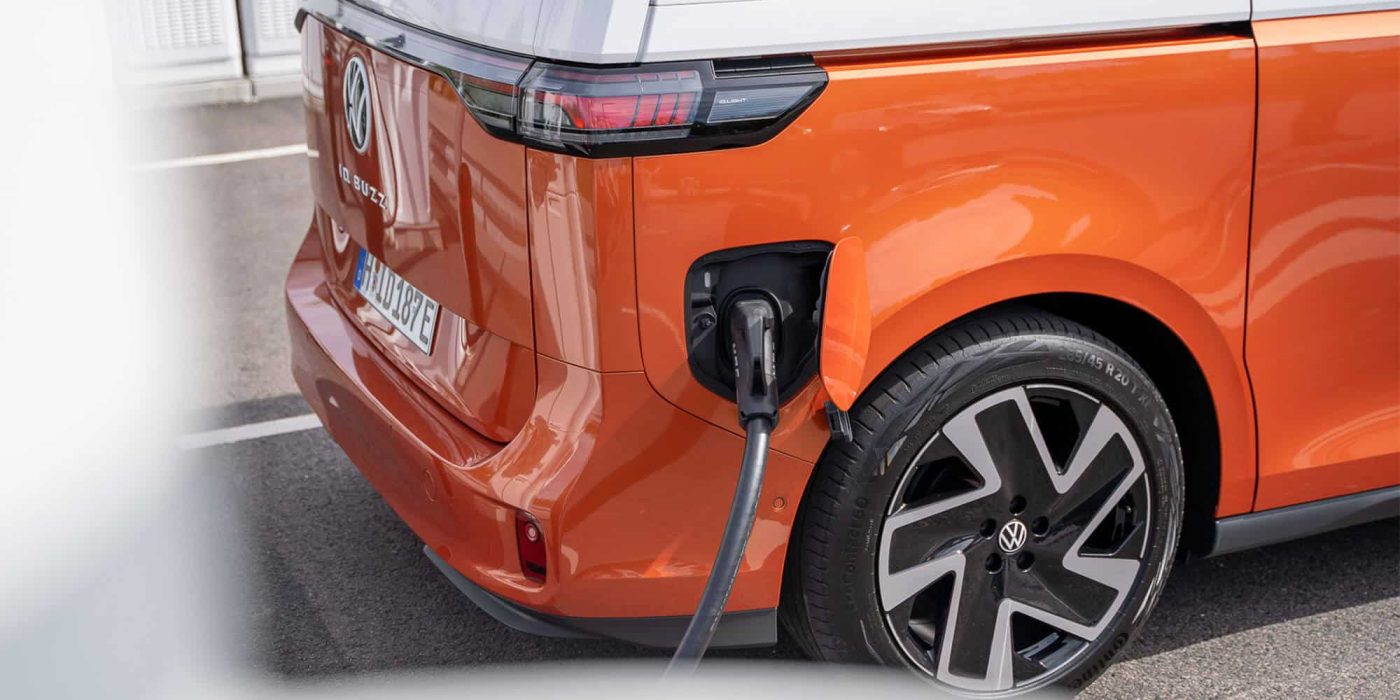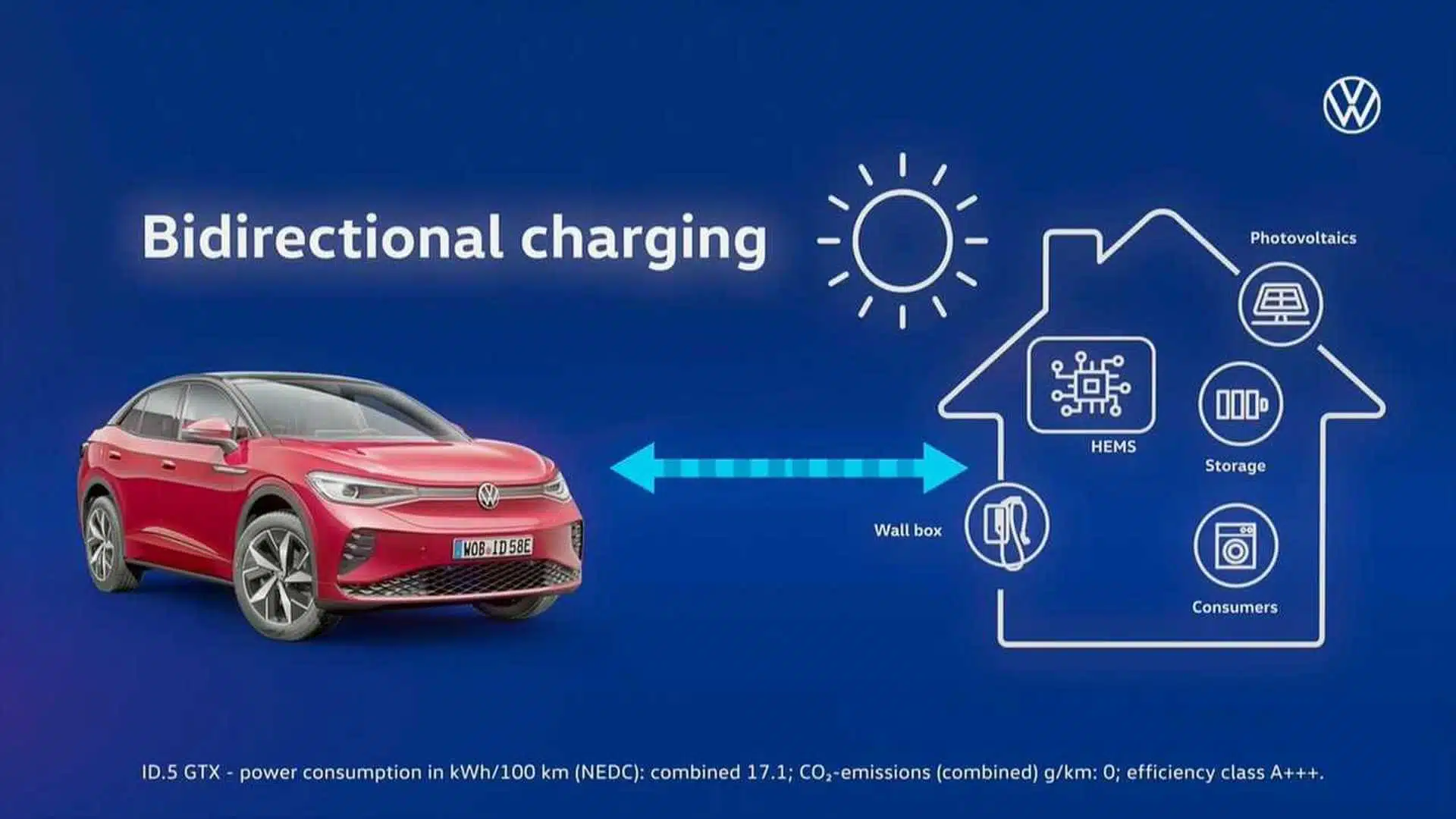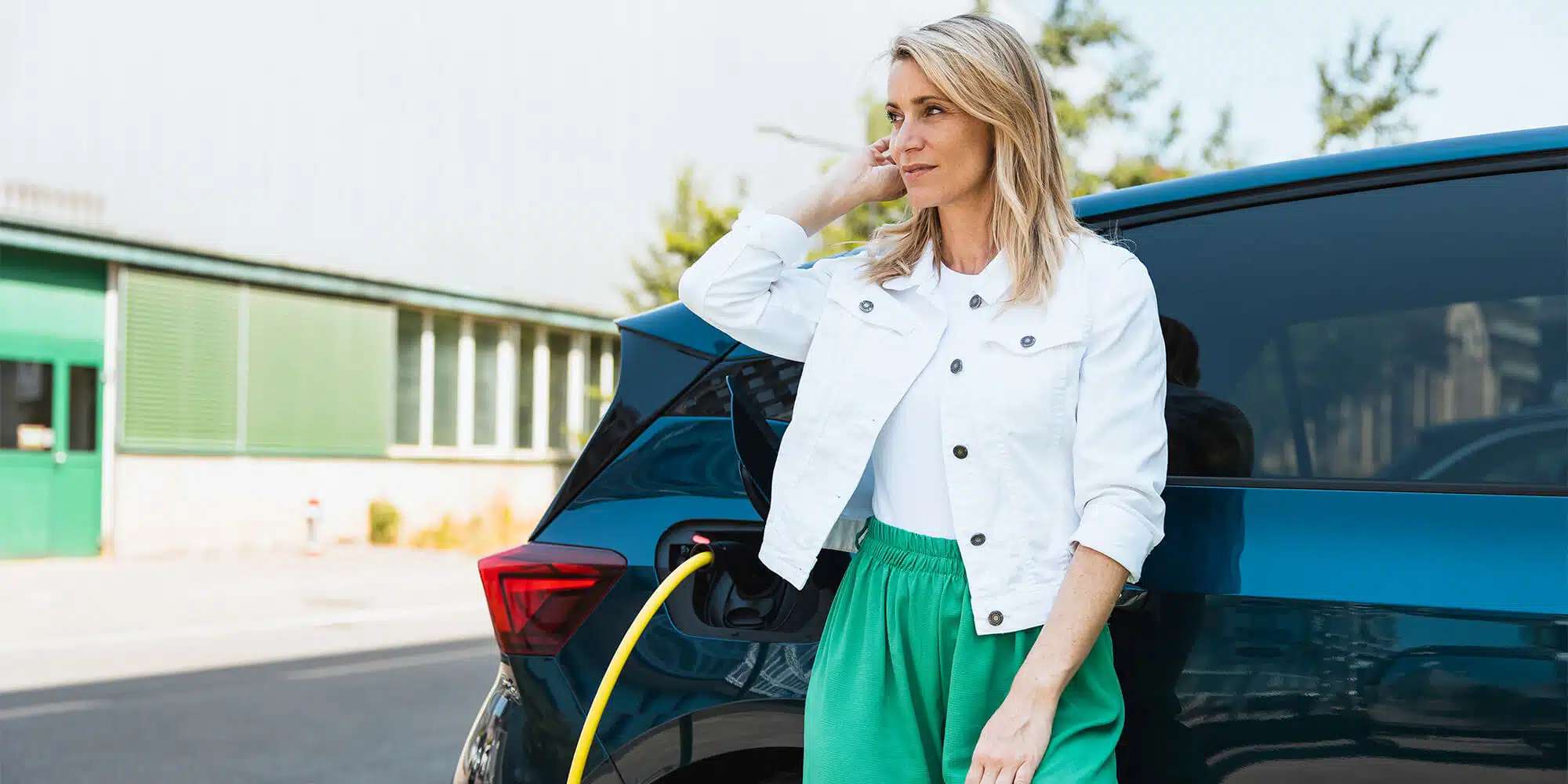
What does bidirectional charging mean anyway?
Bidirectional charging allows the current to flow not only towards the battery, but also in the opposite direction, meaning that an electric car can therefore be used as an energy storage device. If necessary, energy that has been used to charge the electric car can also be retrieved again, resulting in numerous applications that expand an electric car’s field of use. Moving away from a mere means of transport towards a mobile and flexible energy storage device.

V2X, V2H, V2B, V2G, V2L – V2 what?
V2X is an umbrella term for the numerous bidirectional use cases and stands for vehicle-to-everything.
V2H – vehicle-to-home
In vehicle-to-home, the vehicle is used as a battery storage device to power the building when the sun is not shining. This use case is particularly compelling for homeowners with an electric car. The car replaces or complements any existing PV system stationary battery. This application is operated using a HEMS (home energy management system) such as Helion ONE, which regulates the energy distribution in the home according to the owner’s wishes.
V2B – vehicle-to-building
V2B is an expansion of V2H and is aimed more at blocks of flats and businesses. It is no longer just concerned with optimising individual consumption, but also peak shaving.
V2G – vehicle-to-grid
The electricity from the vehicle is used in the public grid in a targeted manner. The power grid is stabilised by selectively charging and discharging the battery at the right time – i.e. balancing energy. Today, this is only being used in the “V2X-Suisse” research project and has not yet been approved for private use.
V2L – vehicle-to-load
The simplest of all bidirectional applications is V2L. This involves operating devices directly using the vehicle. Devices can be powered directly by means of integrated 230 V sockets in the car or via adapters on the Type 2 connection – no matter whether this is a string of lights, vacuum cleaner or even charging a second electric car in an emergency.
Can my car charge bidirectionally?
This is currently one of the most frequently asked questions and also one which is not easy to answer with a simple yes or no. In Japan, all electric cars sold must support bidirectional power transmission. Up to now, it is therefore mainly Japanese car models and vehicles sold there that support bidirectional charging ex works. Over here, many vehicle manufacturers have now announced a bidirectional functionality for certain models or are subsequently enabling this functionality by means of a software update. Examples include the 77 kWh models from the Volkswagen Group’s MEB range.

Can my wall box charge bidirectionally?
Currently, bidirectional charging is based on DC-coupled charging and discharging. This means you need a DC charging station, something which many people will be familiar with from fast charging on the move. Although it generally has considerably less power – usually 10 kW or 20 kW – it requires a lot more technology in the charging station than a typical AC charging station for use at home. For example, charging stations available today which support bidirectional charging cost several times more than a conventional charging station. This means it is quite unlikely you will be able to use your existing wall box for bidirectional charging.

What will it be like in the future?
The last two sections have shown that, as things stand today, there is still a lot of uncertainty surrounding this issue. Bidirectional charging will most probably be available as standard in the future but it remains to be seen to what extent and with what restrictions on battery use this will be true. If you want to make sure you will be able to use bidirectional charging today, you essentially need to go for a model sold in Japan and a matching wall box. The alternative is to simply wait until the market offers suitable charging stations for sale and the vehicles have received the necessary updates.
Just test
an electric car?
Do you find electric mobility exciting but aren’t sure which vehicle is right for you? If so, there’s no time like the present – simply pay Clyde a visit online. Thanks to flexible subscription periods and mileage packages, you can test electric cars completely at your leisure and find out whether electric mobility has a place in your day-to-day life. Easy!



